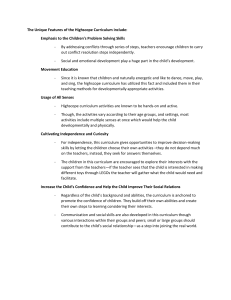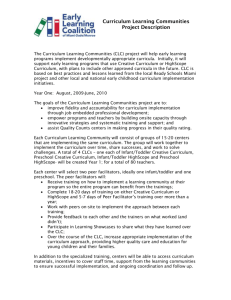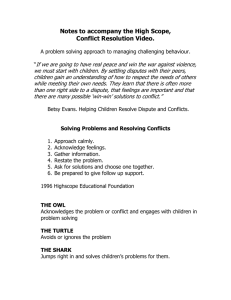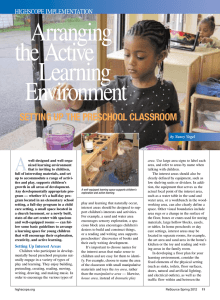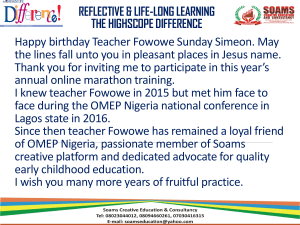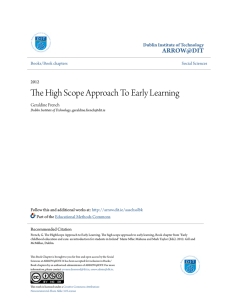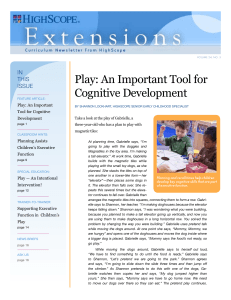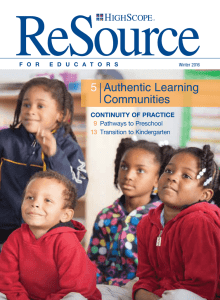High Scope Daily Routine.docx
advertisement
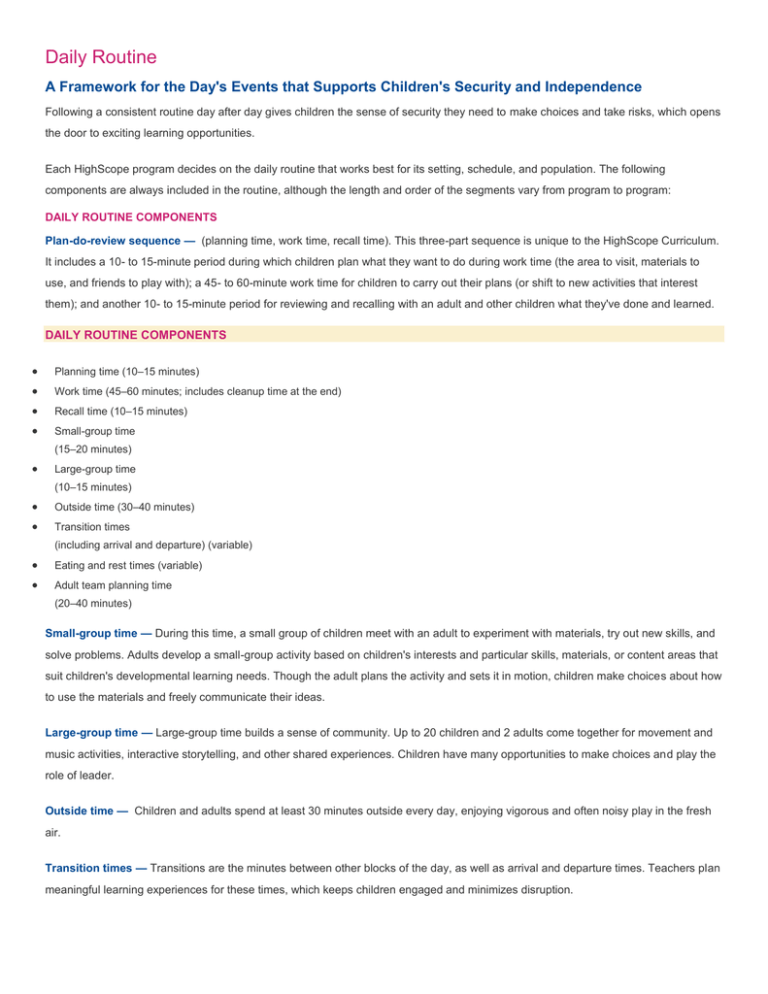
Daily Routine A Framework for the Day's Events that Supports Children's Security and Independence Following a consistent routine day after day gives children the sense of security they need to make choices and take risks, which opens the door to exciting learning opportunities. Each HighScope program decides on the daily routine that works best for its setting, schedule, and population. The following components are always included in the routine, although the length and order of the segments vary from program to program: DAILY ROUTINE COMPONENTS Plan-do-review sequence — (planning time, work time, recall time). This three-part sequence is unique to the HighScope Curriculum. It includes a 10- to 15-minute period during which children plan what they want to do during work time (the area to visit, materials to use, and friends to play with); a 45- to 60-minute work time for children to carry out their plans (or shift to new activities that interest them); and another 10- to 15-minute period for reviewing and recalling with an adult and other children what they've done and learned. DAILY ROUTINE COMPONENTS Planning time (10–15 minutes) Work time (45–60 minutes; includes cleanup time at the end) Recall time (10–15 minutes) Small-group time (15–20 minutes) Large-group time (10–15 minutes) Outside time (30–40 minutes) Transition times (including arrival and departure) (variable) Eating and rest times (variable) Adult team planning time (20–40 minutes) Small-group time — During this time, a small group of children meet with an adult to experiment with materials, try out new skills, and solve problems. Adults develop a small-group activity based on children's interests and particular skills, materials, or content areas that suit children's developmental learning needs. Though the adult plans the activity and sets it in motion, children make choices about how to use the materials and freely communicate their ideas. Large-group time — Large-group time builds a sense of community. Up to 20 children and 2 adults come together for movement and music activities, interactive storytelling, and other shared experiences. Children have many opportunities to make choices and play the role of leader. Outside time — Children and adults spend at least 30 minutes outside every day, enjoying vigorous and often noisy play in the fresh air. Transition times — Transitions are the minutes between other blocks of the day, as well as arrival and departure times. Teachers plan meaningful learning experiences for these times, which keeps children engaged and minimizes disruption. Eating and resting times (if applicable) — Meals and snacks allow children to enjoy eating healthy food in a supportive social setting. Rest is for napping or quiet, solitary activities. Since both activities happen at home as well as at school, adults in HighScope programs try to respect family customs at these times as much as possible. Adult team planning time — This time happens every day in a HighScope program. It can occur during children's nap time, before children arrive, or after they leave. The teaching team meets to discuss their observations of children's developing abilities and interests, focusing on these observations as they plan activities and review the materials in the classroom. Retrieved from http://www.highscope.org/Content.asp?ContentId=182 on October 5, 2015
